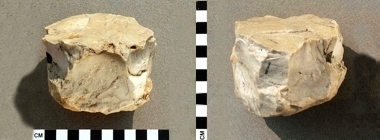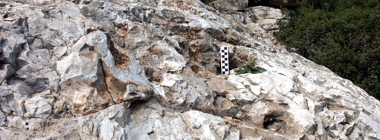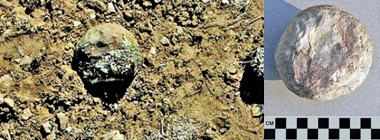Hammer Stones and Peck Marks
Reduction sequences at Vrahos began from angular chunks of raw material, whether freshly quarried or collected from among natural clastics. In either case the chunks would have been virtually free of cortex. (Although “spoiled” surfaces and areas are common in the Vrahos silex, their occurrence has nothing of the regularity characteristic of cortex in, e.g., nodular flint.) Consequently, decortication flakes and cortical pieces in general, so helpful in reconstructing reduction sequences and assigning individual pieces to particular stages of these sequences in other quarries, cannot be counted on in the case of Vrahos. Patination is common, but its occurrence on individual pieces is not always easy to decipher. For these reasons we have rarely been able to identify pieces in the initial stages of reduction ( Fig. 8 ) . It is likely that raw material was not just collected from among clastics lying on the ground but was also quarried from the surface of the huge boulders of Vrahos. Peck marks are visible on several of those boulders. We have reasons to think that in one case at least such peck marks are prehistoric, possibly Middle Palaeolithic (Fig. 9). Hammer stones are more common near the foot of Vrahos than elsewhere in the scatter. Some are very heavy, suitable for removing chunks from silex boulders (Fig. 10).


